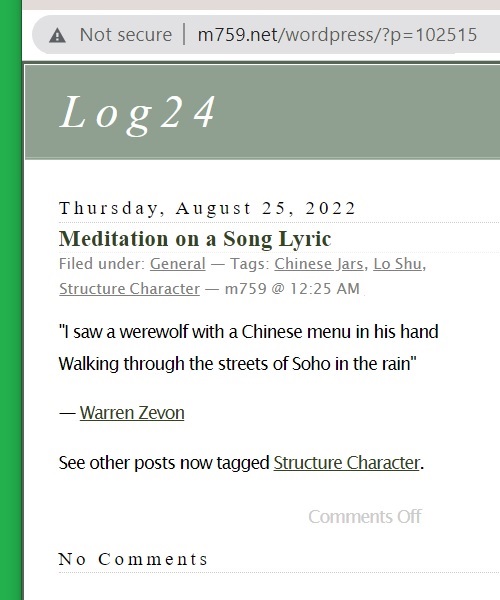All Saints' Day:
The Song of Saint Ezra
Ezra Pound, imagist poet and fascist saint, died on this date in 1972.
"But you, newest song of the lot,
You are not old enough
to have done much mischief.
I will get you a green coat out of China
With dragons worked upon it."
— "Further Instructions," 1913
For more on China and Christian Fascism, see the memorial to the wife of Generalissimo Chiang Kai-shek in TIME magazine, issue dated Nov. 3, 2003.
From Image in Poetry:
"Ezra Pound made perhaps the most widely used definition of image in the 20th century:
An ‘Image’ is that which presents an intellectual and emotional complex in an instant of time. "
— Ezra Pound, "A Few Don’ts by an Imagiste," Poetry, March 1913
For an excellent essay by Jungian James Hillman on the political implications of imagism, see
Egalitarian Typologies versus
the Perception of the Unique.
A specific image that is a personal favorite of mine is found in the I Ching:

Note that in the West,
this Chinese character
is known as the "Pound sign."
"The Perception of the Unique," indeed.














